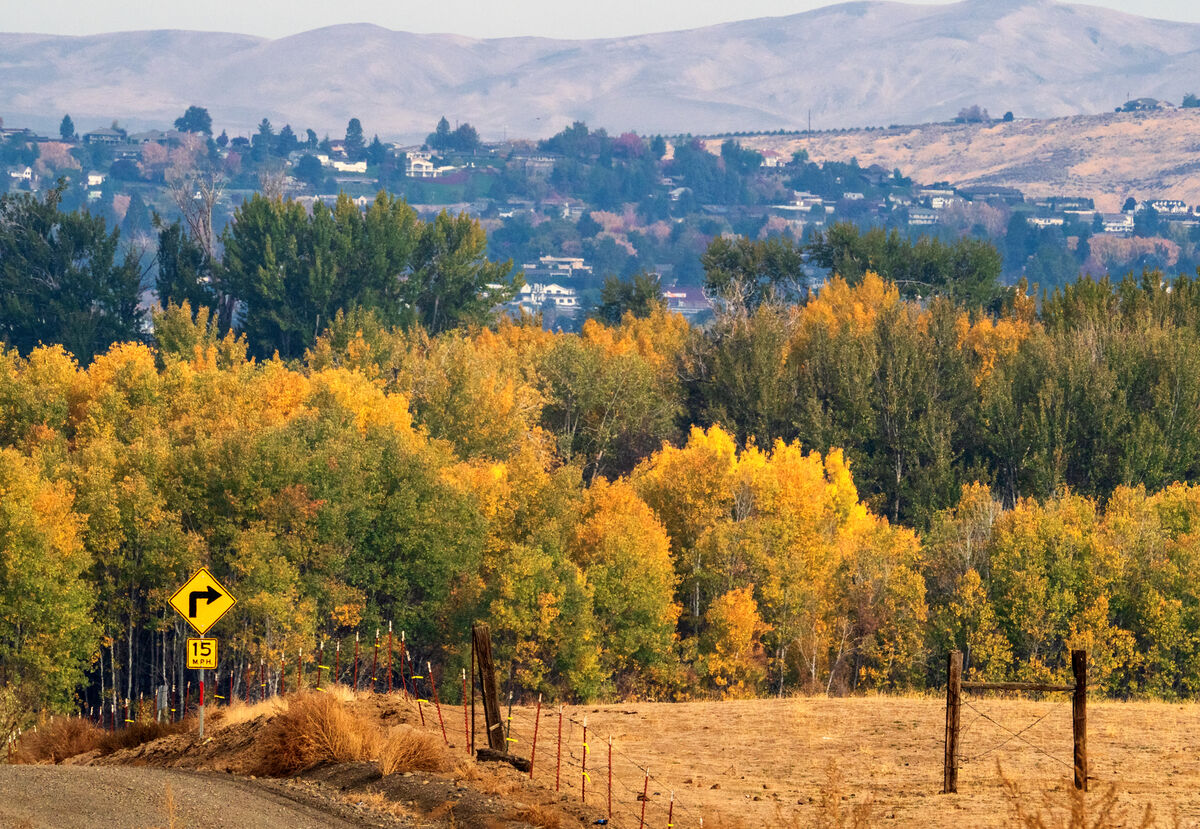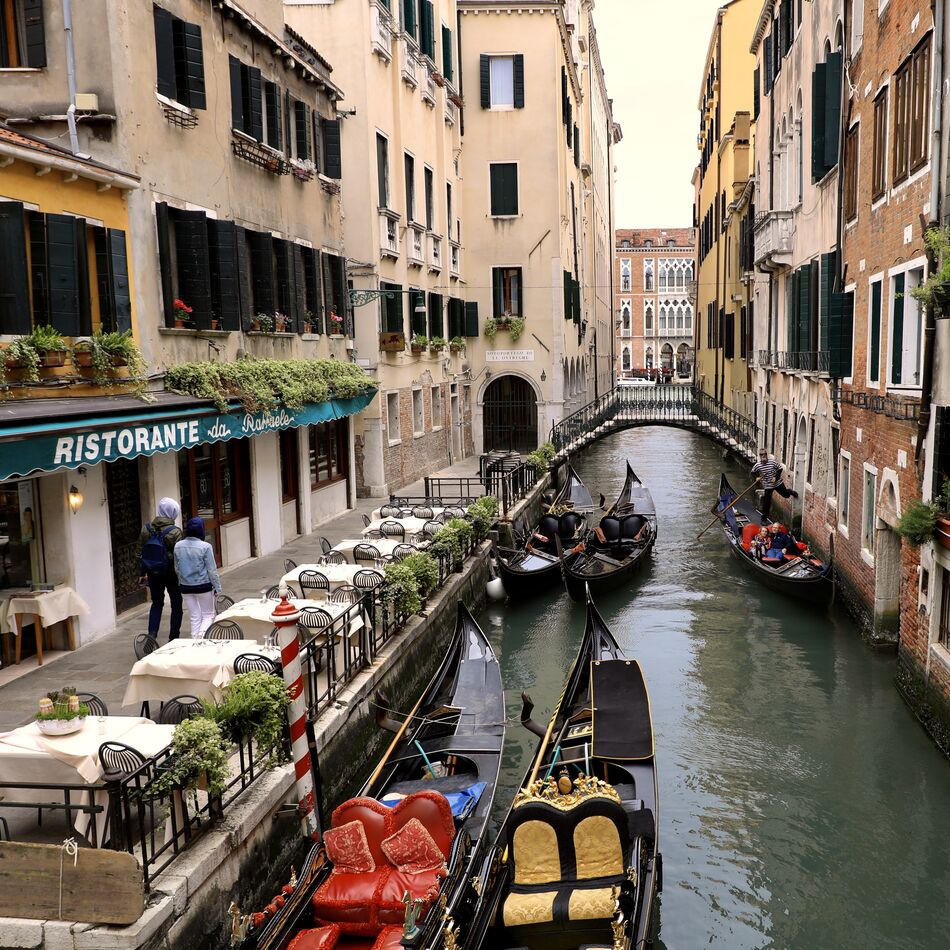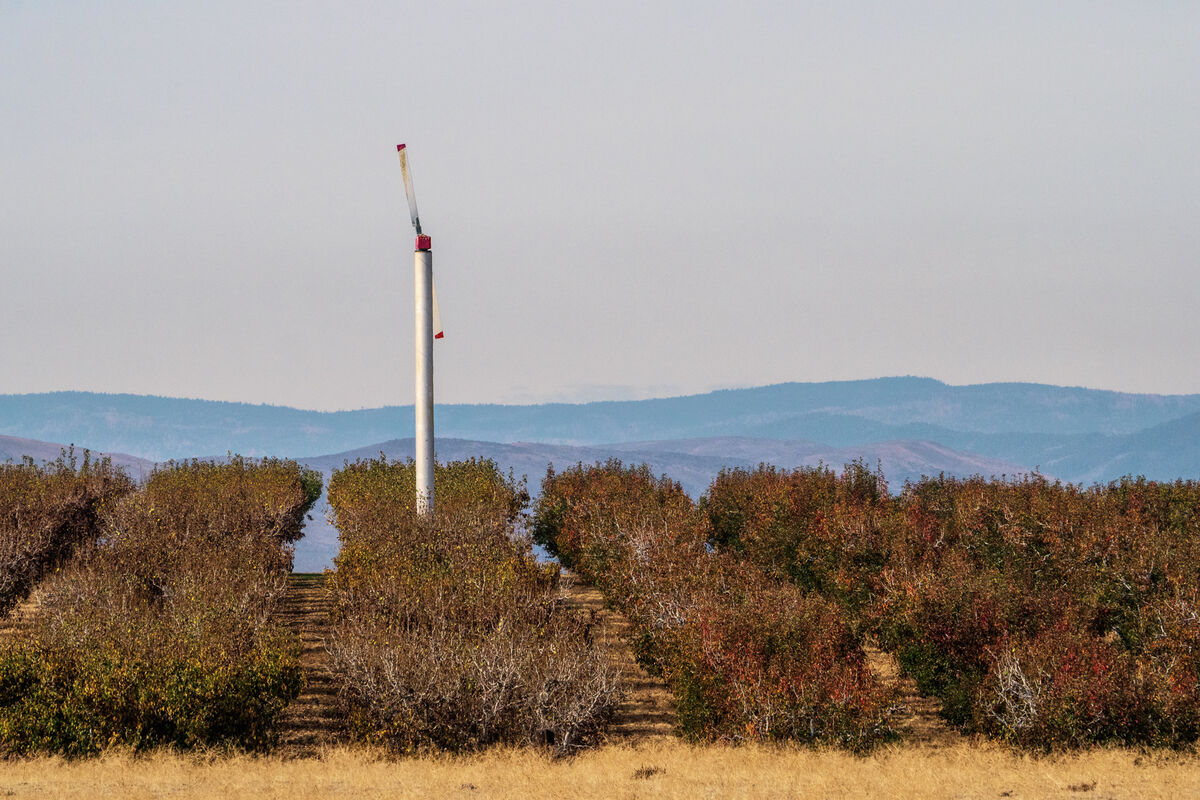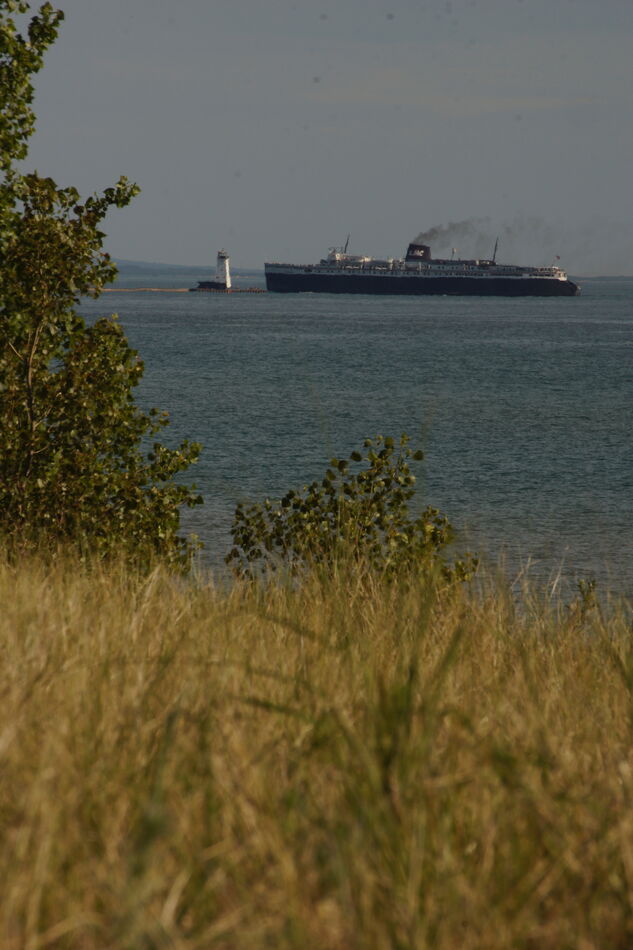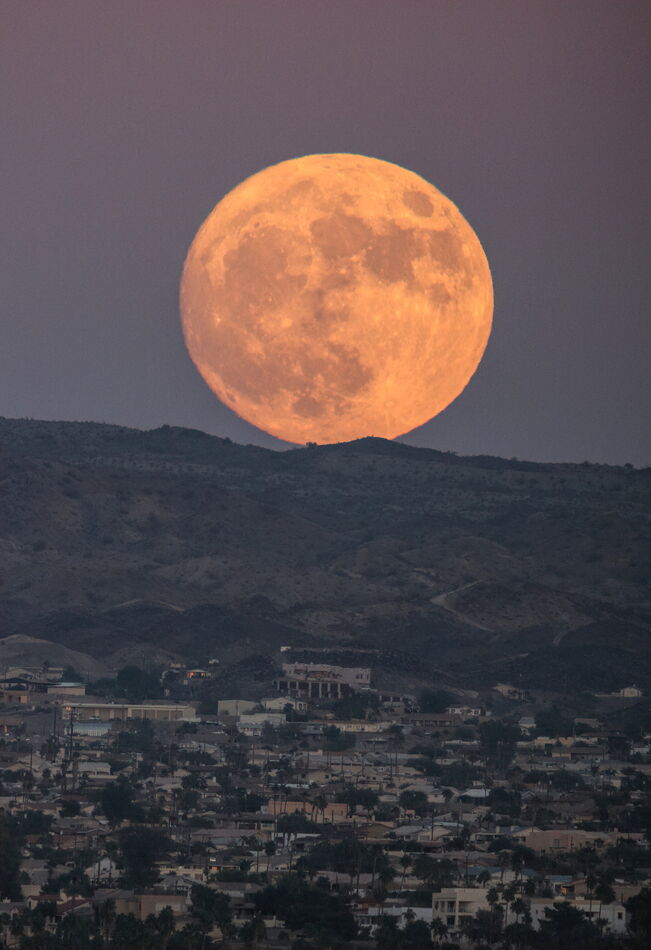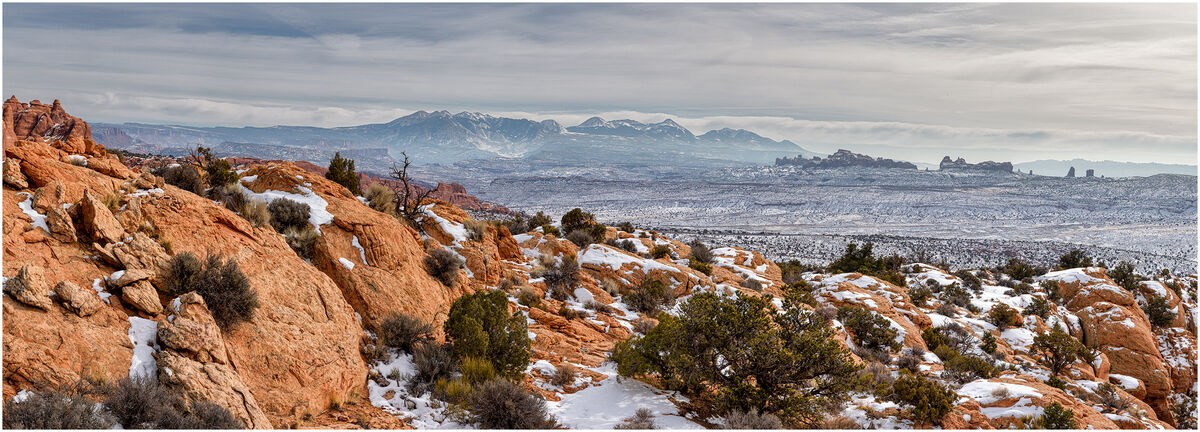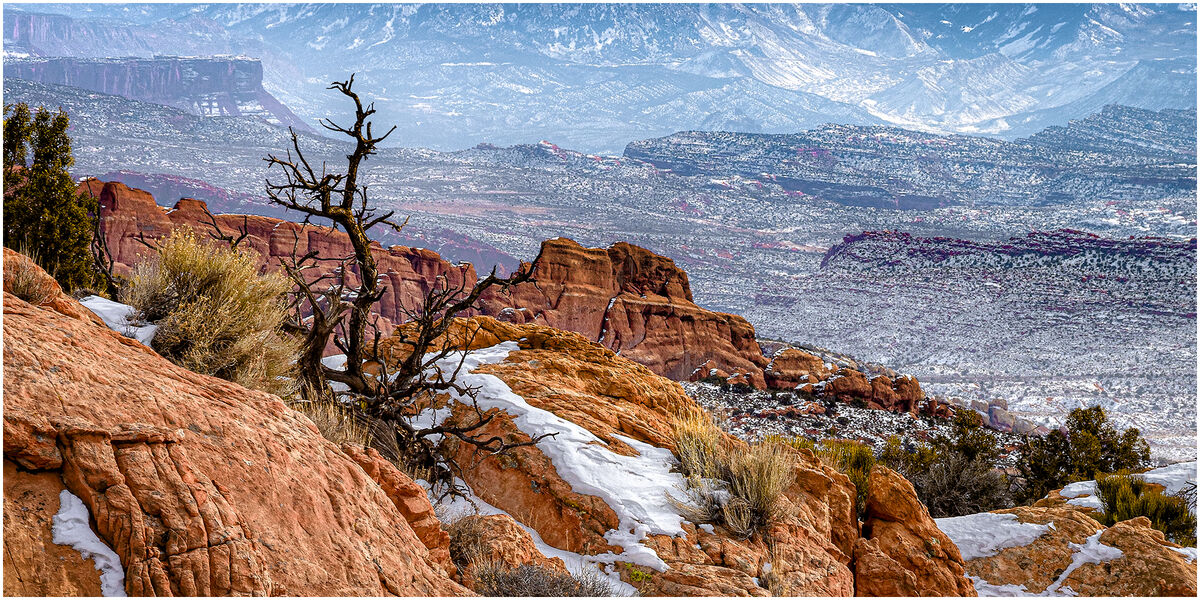Telephoto Landscape
Oct 21, 2023 16:44:34 #
228 mm on an M4/3 body. The assignment was to show lens compression. I think what I mostly captured this morning was the poor air quality 
If any of you have telephoto shots demonstrating lens compression, please offer tips!

If any of you have telephoto shots demonstrating lens compression, please offer tips!
Oct 21, 2023 20:29:36 #
Linda From Maine wrote:
228 mm on an M4/3 body. The assignment was to show lens compression. I think what I mostly captured this morning was the poor air quality 
If any of you have telephoto shots demonstrating lens compression, please offer tips!

If any of you have telephoto shots demonstrating lens compression, please offer tips!
The only tip I could give involves buildings as in the attached image. Even so I’m so sure that it’s compressed vs just being a point of perspective. I understand that there are diverse opinions about the subject.
Oct 21, 2023 21:54:40 #
pmorin wrote:
Thanks very much, Pete. The only tip I could give involves buildings as in the attached image. Even so I’m so sure that it’s compressed vs just being a point of perspective. I understand that there are diverse opinions about the subject.
Yeah, perspective, compressed view relative to wide angle. Lots of articles and terms
 As shown by your example, and researching more online, I think success depends on the scene having elements with recognizable scale. Here's another shot I took, but most people won't know how tall the wind machine is, nor that those are full size apple trees that look compressed in their rows (and how long are the rows?).
As shown by your example, and researching more online, I think success depends on the scene having elements with recognizable scale. Here's another shot I took, but most people won't know how tall the wind machine is, nor that those are full size apple trees that look compressed in their rows (and how long are the rows?).I appreciate your time and beautiful photo!
Oct 21, 2023 22:04:10 #
Linda From Maine wrote:
Thanks very much, Pete. br br Yeah, perspective,... (show quote)
I think your example is a good indicator of compression. When you compare the tree shadows from front to rear you see wider shadows in the fore and thinner ones as you follow tree rows deeper into the image.
My time is now being spent on entertaining myself as we travel back home.
Oct 21, 2023 23:18:27 #
I think distance between you and the fore ground is a biggie.
The distance between me and the foreground here was many hundreds of yards but I don’t remember how many. (A Lot!)
From there to the lighthouse is two or three miles.
Clear skies and clever PP on the distance parts would for sure help.
Hmmmmmm, can’t find photo.
Will post and then search.

The distance between me and the foreground here was many hundreds of yards but I don’t remember how many. (A Lot!)
From there to the lighthouse is two or three miles.
Clear skies and clever PP on the distance parts would for sure help.
Hmmmmmm, can’t find photo.
Will post and then search.


Oct 21, 2023 23:34:30 #
Finally found it.
My idea being, get as far back from the foreground as possible.
I’m pretty sure this pic is at 500mm, probably on a crop sensor.
My idea being, get as far back from the foreground as possible.
I’m pretty sure this pic is at 500mm, probably on a crop sensor.
Oct 22, 2023 06:36:35 #
Something that would demonstrate the effect very clearly is comparing telephoto shots and wide angle shots of the same scene. If background mountains aren't close and you use a wide angle lens, the mountains can disappear into the distance and become insignificantly small. OTOH if you use a telephoto lens it brings the background nearer, making things like mountains look larger.
I've used that technique a few times when I wanted to capture a specific foreground but didn't want to lose background mountains. Having said that, I don't have a telephoto lens but I do have a lens that's capable of zooming into the telephoto range. Most of my landscape shots are taken at the wide angle end, so for me, anything more than ~60mm FF equiv. (40mm APS-C) is a lot of zoom.
As has been pointed out, using zoom can occasionally require you to back off a significant distance from the foreground that you want to capture. Normally I use mainly the foreground to compose landscape shots, and usually background elements like mountains aren't difficult to include in the composition. However, when I'm using a significant amount of zoom I'll use the background mountains (or whatever) to frame the shot and then reposition myself as necessary to include the foreground that I want. It's easier to get the desired results doing it that way round.
Since I don't have a telephoto lens I can't provide any good examples of "wide angle v telephoto". But I can include an example of when I used the background to determine framing and then had to move to include the foreground.
.
I've used that technique a few times when I wanted to capture a specific foreground but didn't want to lose background mountains. Having said that, I don't have a telephoto lens but I do have a lens that's capable of zooming into the telephoto range. Most of my landscape shots are taken at the wide angle end, so for me, anything more than ~60mm FF equiv. (40mm APS-C) is a lot of zoom.
As has been pointed out, using zoom can occasionally require you to back off a significant distance from the foreground that you want to capture. Normally I use mainly the foreground to compose landscape shots, and usually background elements like mountains aren't difficult to include in the composition. However, when I'm using a significant amount of zoom I'll use the background mountains (or whatever) to frame the shot and then reposition myself as necessary to include the foreground that I want. It's easier to get the desired results doing it that way round.
Since I don't have a telephoto lens I can't provide any good examples of "wide angle v telephoto". But I can include an example of when I used the background to determine framing and then had to move to include the foreground.
.
Framed using the background.
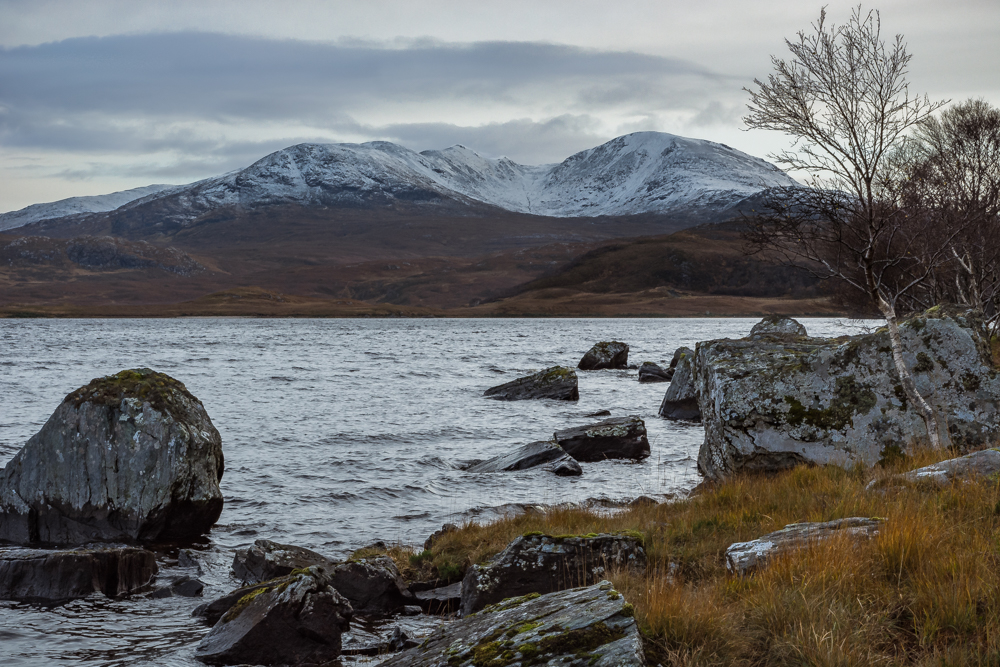
Normal kitchen sink framing.
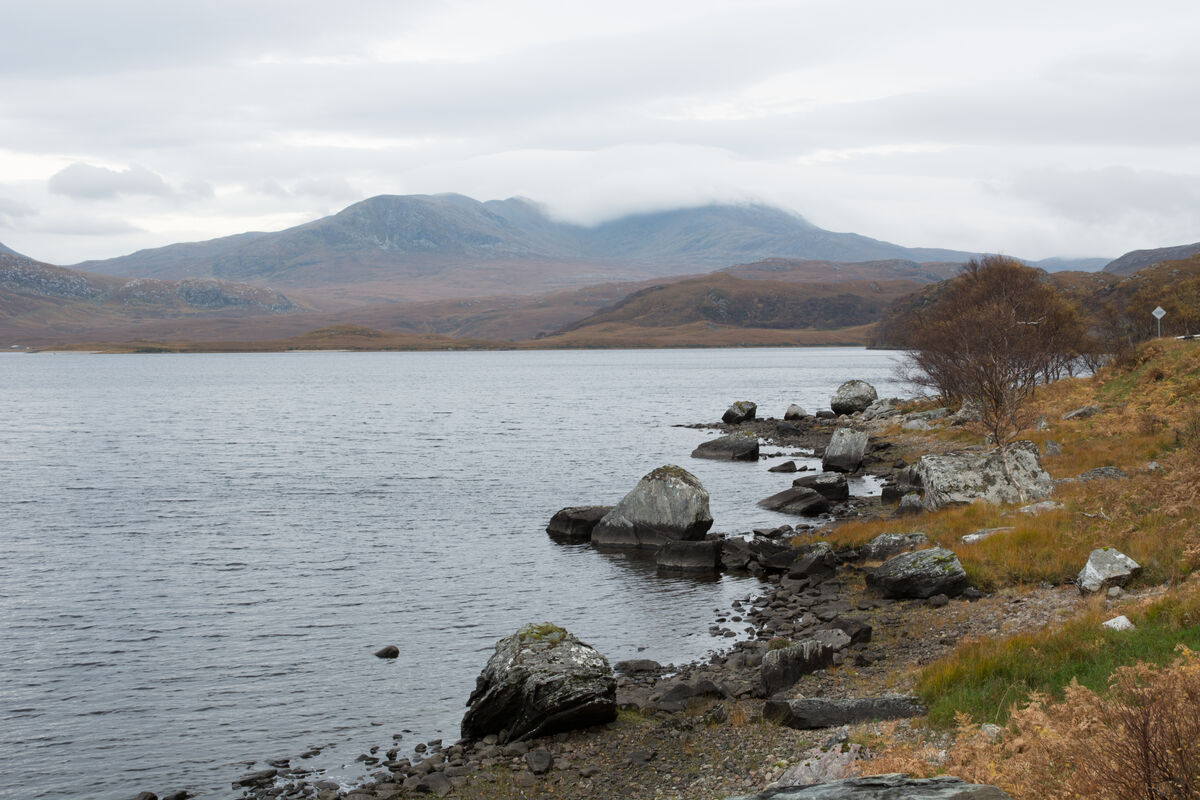
Oct 22, 2023 07:31:12 #
Oct 22, 2023 08:38:41 #
BassmanBruce wrote:
Fascinating that it feels like you're standing on the edge of the water and that the ship and lighthouse are miniature. Thanks so much for your example and advice!I think distance between you and the fore ground i... (show quote)
Oct 22, 2023 08:44:04 #
R.G. wrote:
Thanks very much, RG. Comparison shots certainly would be best for learning lens properties. I only need to show results, however Something that would demonstrate the effect very c... (show quote)

From both yours and Bruce's photos I'm getting a sense of what needs to happen to make the effect more obvious.
Oct 22, 2023 08:44:26 #
Oct 22, 2023 08:45:54 #
pmorin wrote:
Thanks for pointing that out; maybe I can use shadows in other subjects that way. All the best!I think your example is a good indicator of compression. When you compare the tree shadows from front to rear you see wider shadows in the fore and thinner ones as you follow tree rows deeper into the image.
My time is now being spent on entertaining myself as we travel back home.
My time is now being spent on entertaining myself as we travel back home.
Oct 22, 2023 10:30:03 #
Linda From Maine wrote:
228 mm on an M4/3 body. The assignment was to show lens compression. I think what I mostly captured this morning was the poor air quality 
If any of you have telephoto shots demonstrating lens compression, please offer tips!

If any of you have telephoto shots demonstrating lens compression, please offer tips!
This is my interpretation of lens compression. I was about 4-5 miles from the houses and maby 8 miles from the mountain peak. I used a 952mm telescope with a Canon 5D Mk III attached.
Oct 22, 2023 11:27:49 #
Cany143
Loc: SE Utah
Linda From Maine wrote:
228 mm on an M4/3 body. The assignment was to show lens compression. I think what I mostly captured this morning was the poor air quality 
If any of you have telephoto shots demonstrating lens compression, please offer tips!

If any of you have telephoto shots demonstrating lens compression, please offer tips!
Attached are two images that potentially demonstrate what you and/or others might consider 'lens compression'. The first (though shot and compiled as a multi-image pano with a w/a lens) shows approximately what one would view and/or 'see' if using a 'normal' (50mm-ish or thereabouts) from where it was shot, and the second (a three-image focus stack) is what one would see from approximately the same vantage point if they were using a long-ish (250-300mm) lens.
Lens compression is one way --is perhaps the usual or common way-- to describe the seemingly truncated perception of a visual perspective, and I suppose that's an accurate enough term to use for gov't work. I tend, however, to use a phrase I learned in an art school summer session I was awarded (while in high school, back during the Jurassic), namely 'the graying down of distance'. That, of course, more describes whatever interference exists that's due to atmospherics (fog, haze, moisture, etc.) between the observer and the near, the mid, and the far distances in view rather than in the visual perspective, but it works for me, and is an aspect in landscape imagery I try to find.
Oct 22, 2023 13:06:17 #
In #2 the plateau just to the left of the tree is so small in the first shot that it doesn't get noticed.
If you want to reply, then register here. Registration is free and your account is created instantly, so you can post right away.

